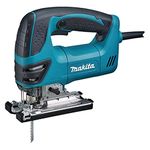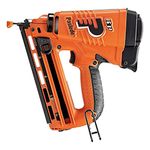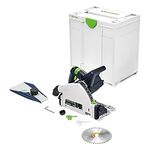Compact Cordless Recip Saws
A head-to-head comparison of one-handed saws built for tight spaces

It has happened: On construction and remodeling job sites everywhere, cordless power tools have largely replaced their corded predecessors. Competition among tool manufacturers fueled the innovations necessary for this change—higher amps for raw power, greater amp-hour ratings for longer run time, and fast charging to eliminate downtime. To further sweeten the deal, brushless-motor technology has enabled manufacturers to reduce tool weight and eliminate a troublesome maintenance task.
Cordless-tool innovation isn’t slowing down. If you want proof, just take a look at the cordless reciprocating saws reviewed in this article. Instead of sticking to the elongated barrel shape that has defined this tool category since Milwaukee sold its first Sawzall in 1951, manufacturers have come up with a variety of compact designs. These models offer less in the way of brute power but much more in terms of portability and operating options.
Why buy a compact reciprocating saw?
In its full-size form, the reciprocating saw is a demolition demon, a tireless workhorse for cutting through materials of all types and thicknesses. But these old-school saws are definitely designed for two-handed use, and they can be difficult or impossible to maneuver in tight spaces. You know what I mean if you’ve ever tried to use a full-size saw under a sink, in a crawlspace, or between closely spaced framing. The compact cutters we tested are a lot easier to maneuver in cramped spaces. Unlike their big brothers, they’re designed to be used comfortably and effectively with one hand, which is an additional advantage when you’re working in tight quarters. But these smaller saws are also handy for many cutting tasks that don’t demand a full-size model, such as cutting drywall or plastic pipe, trimming a few protruding nails, cutting openings in sheathing, and downsizing demo material to fit in a dumpster.
Testing the small saws
The seven saws in our test group share a number of useful features. They can be used with one or two hands, although a 10-finger grip on the pistol-shaped Bosch saw might feel a little cramped. The batteries include charge indicators to help avoid the inconvenience of premature power loss. (The Bosch saw includes the indicator on the tool housing rather than on the battery.) Each saw has a trigger lock for safety and an LED light that turns on automatically when the tool is in use. You can expect toolless blade changes from all the saws too.
Our test sessions identified differences in cutting performance and also in general use. Before we get into those details, it’s important to note another difference as well: how the saws are sold. You can expect plenty of variations, along with limited availability due to supply-side shortages. You might only have the option of buying the bare tool, which works out well if you’ve already invested in the manufacturer’s battery platform. But different kit configurations are also in the mix, including a range of hard or soft cases, chargers, and spare batteries. You’ll need to take these factors into consideration, along with the performance evaluations and recommendations that follow.

MILWAUKEE Hackzall 2719
Power 18v
Price $160 (bare tool)
Specs 7⁄8-in. stroke | 3000 spm | 5.0 lb.*
This tool’s performance made it easy to pick a clear winner. After laboring through lengthy cuts with a few of the other saws, the Hackzall surprised me with the impressive cutting speed and smooth, low-vibration operation that I’d expect from a full-size saw. The longer stroke (7⁄8 in.) certainly contributed to the aggressive cutting capability, and the smooth operation under load makes this tool a pleasure to use. Of all the saws in this test, the Hackzall is the best overall performer—a compact saw that can handle serious demolition, light-duty cutting work, and anything in between.
MAKITA RJO3
Power 12v
Price $90 (bare tool)
Specs 1⁄2-in. stroke | 3300 spm | 3.5 lb.*
The Makita is light for its size, and its secondary trigger located close to the blade provides useful gripping options. The adjustable shoe is nice, although it requires an onboard Allen wrench. Thanks to a protruding nub on the blade holder, you can turn the locking mechanism even if you’re wearing gloves. The holder stays open until a new blade is inserted. I found the trigger locks aggravating to use, because you need to depress the lock button while simultaneously pulling on the trigger. And the saw didn’t live up to expectations in cutting tests.
DeWalt DCS312
Power 12v
Price $150 (bare tool)
Specs 5⁄8-in. stroke | 2800 spm | 4.0 lb.*
Performance-wise, this saw landed in the middle of the pack. Its light weight and compact size make it an attractive addition to a remodeling tool kit. The tool also has a very comfortable grip and good ergonomics overall. The DCS312 wouldn’t be a good choice for powering through demanding demolition tasks, but it should do fine for a wide variety of light-duty jobs. Good ergonomics and a comfortable grip make it an easy tool to hold.
BOSCH PS60
Power 12v
Price $110 (bare tool)
Specs 1⁄2-in. stroke | 3000 spm | 3.0 lb.*
This pocket-size saw will get into tight quarters that are impossible for other saws to access, but its cutting capabilities are similarly small. It took more than a minute for this saw to cut through a 2×4, and we stopped our timed cuts through nail-embedded stock and steel pipe—the process just took too long. That said, remodeling and home-repair jobs are full of cutting challenges where compact size trumps cutting speed. This saw will easily cut PVC pipe, drywall, sheathing, or a few studs.
Getting the most from a smaller sawIf you decide to add one of these saws to your tool arsenal, there are several things you can do to get the best performance from it. For starters, don’t use aggressive, coarse-cutting blades with just a few teeth per inch (tpi). In most cases, the short stroke on these saws (1⁄2 in. on some models) won’t allow the big teeth to cut properly. For powering through wood, you’ll get faster cuts and less vibration using a blade with around 6 tpi. If your saw has a fixed (nonadjustable) shoe, you won’t have the option of adjusting it to expose sharper teeth as a blade becomes worn. To keep cutting effectively, put in a new blade, or change your cutting angle to keep fresh teeth in the cut. |
For serious demolition, three saws made the cut
When these saws started to arrive, I wondered, How close can a smaller, lightweight cordless saw come to the cutting characteristics of a full-size saw? As you’ll see in the descriptions of the individual saws, cutting capability—specifically, how fast a saw cut through our test materials— varied quite a bit. Some of this variation is attributable to stroke length. Saws with longer stroke lengths were able to cut faster. The only saw that departed from this pattern was the Metabo HPT. This saw’s cutting capability benefited from slightly higher strokes per minute (3100 spm vs. 2800 spm or 3000 spm for the other saws) and a very low vibration rate.
It’s fair to say that forcing compact, lightweight cordless saws through tough cutting tasks sets an unreasonably high bar. The good news about all the saws in this tool category is that every model is fully capable of solving problems that occur every day in construction and remodeling work. Who wants to haul a full-size recip saw into the attic just to cut a 4-in. hole for a vent? Wouldn’t it be nice to have a small, lightweight saw when you’re on a ladder trimming branches away from a service mast? Why use a heavy tool just to cut through drywall? In these situations and many more, any saw in this test group will provide all the cutting capability you need.
If you want a saw that can handle all the small stuff plus some serious demolition work, three tools stood out as all-purpose performers. The Kobalt saw offers plenty of power and capability for a very reasonable price. The Metabo does everything well and doesn’t force you to give up the adjustable shoe that’s standard on big saws. And the Milwaukee does its pedigree proud by cutting not just faster than the competition, but smoother as well.
KOBALT KRS 124B-03
Power 24v
Price $100 (bare tool)
Specs 1-in. stroke | 3000 spm | 5.0 lb.*
The Kobalt saw is the clear winner for best value. It has a long stroke, cuts fast, and has the highest-voltage battery of the saws in the test. What’s more, this saw came close to the more expensive Milwaukee and Metabo HPT models in cutting performance and low vibration. Overall, it makes the grade as a serious demolition tool, and at an attractive price.
RIDGID R86448
Power 18v
Price $100 (bare tool)
Specs 3⁄4-in. stroke | 3000 spm | 6.0 lb.*
This was the only saw in our test that can be switched to cut with orbital action, but that mode didn’t yield faster cutting times than those of the Milwaukee, Metabo, and Kobalt saws. There’s also more vibration than I expected, given the Ridgid’s larger size and heavier weight. This tool’s shiny wire shoe provides more visibility than the stamped-steel versions on other saws, and it certainly won’t trap debris like bulkier shoes can. However, it has the same limitations as the other fixed shoes.
METABO HPT 602266890
Power 18v
Price $110 (bare tool)
Specs 1⁄2-in. stroke | 3100 spm | 5.0 lb.*
I’d be tempted to buy the Metabo HPT saw for its toolless shoe adjustment alone; it’s the only model with this feature. It did well in other areas too. Despite its short stroke, cutting speed was surprisingly good, and cutting was nearly as vibration-free as with the smooth-sawing Milwaukee. Metabo’s blade holder accepts T-shank jigsaw blades for tight-radius cuts that aren’t possible with standard recip blades. This is a well-made saw that can handle a wide variety of cutting tasks.
How we tested
The performance tests we came up with involved making timed cuts in three different materials: framing lumber, steel pipe, and 2x4s with 16d nails embedded every inch (the “torture test”). All saws were fitted with blades supplied by Starrett. For the three materials, we used a coarse wood-cutting blade, a multipurpose blade designed for nail-embedded wood, and a metal-cutting blade. The Milwaukee, Metabo HPT, and Kobalt saws had the fastest cutting times. |
 Tim Snyder is a writer and finish carpenter in Newtown, Conn.
Tim Snyder is a writer and finish carpenter in Newtown, Conn.
Photos by Melinda Vazquez, except where noted.
Fine Homebuilding #305
RELATED LINKS
Fine Homebuilding Recommended Products
Fine Homebuilding receives a commission for items purchased through links on this site, including Amazon Associates and other affiliate advertising programs.

Makita Top-Handle Jigsaw (4350FCt)

Paslode Cordless Finish Nailer (IM250A)

Festool Cordless Track Saw (TSC 55 KeB-F)
































View Comments
The Metabo and Metabo HPT branding is very confusing. The cordless batteries are not interchangeable. You called this compact reciprocating saw a Metabo HPT, formerly Hitachi, but it is a Metabo. If you can't get it right how is the public supposed to get it right?